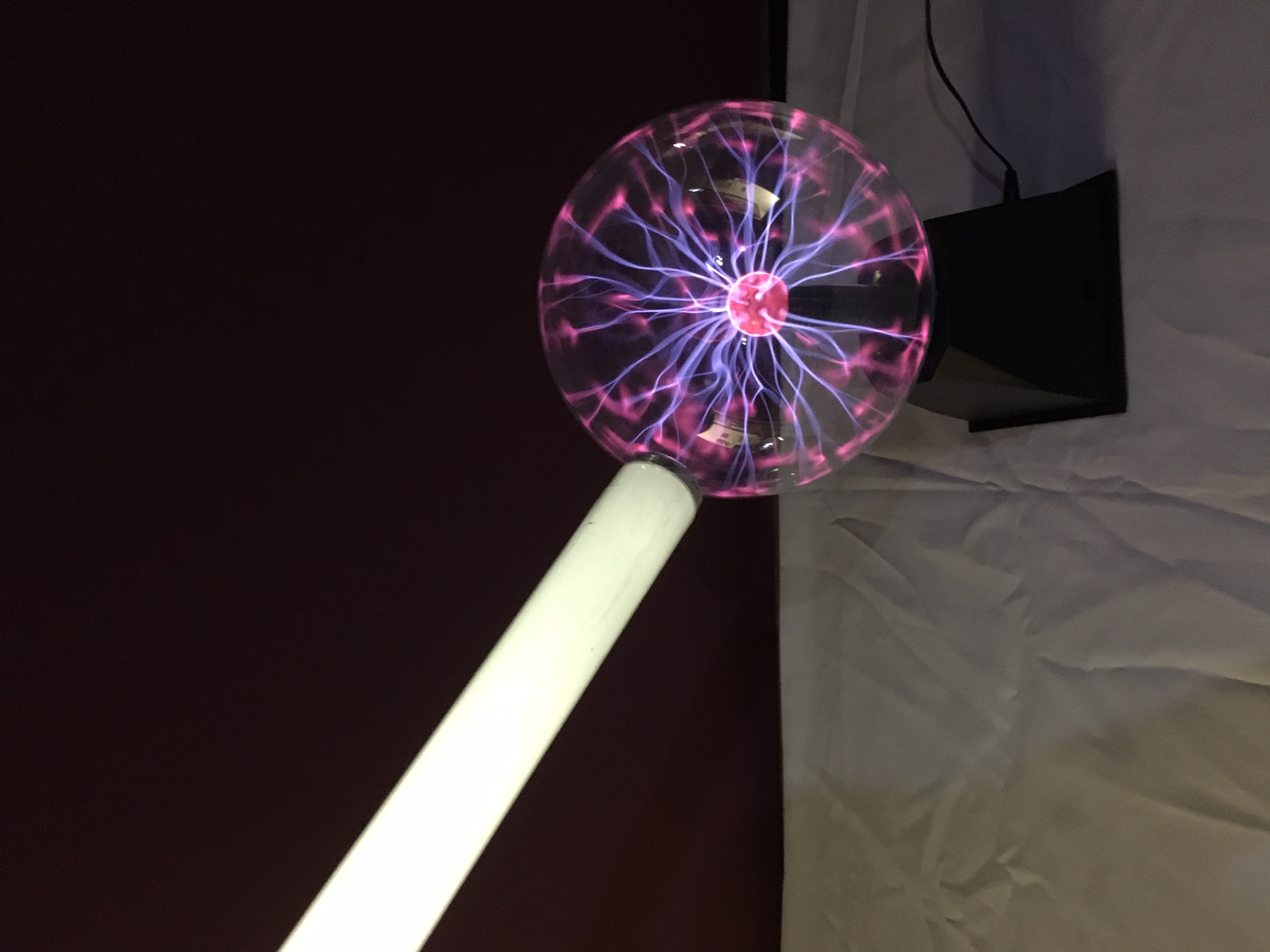Human Circuit with Plasma Ball
From UO Physics Demonstration Catalog
Revision as of 11:44, 26 January 2023 by Physdemo (talk | contribs) (Created page with "{{NewDemo|subject=Electricity and Magnetism|topic=Electric Fields and Potential|file1=plasma.jpg}} Have a student hold the fluorescent bulb in the left hand and have them place their right hand on the bulb. Then you grab the bulb around the midpoint, and the bulb will light. Slide your hand down the bulb, and the light will follow your hand. he student is at high potential (a student's potential is always high) and you ar at a lower potential (ground) so the bulb ligh...")
Return to Electric Fields and Potential
Description:
Have a student hold the fluorescent bulb in the left hand and have them place their right hand on the bulb. Then you grab the bulb around the midpoint, and the bulb will light. Slide your hand down the bulb, and the light will follow your hand. he student is at high potential (a student's potential is always high) and you ar at a lower potential (ground) so the bulb lights. If you now put your hand on Plasma Ball, the light will go out because you are both at the same potential. Show the concept that current must have a difference of potential to flow,
Location:
- Plasma Ball: T-0
- Fluorescent Bulbs: I-2
